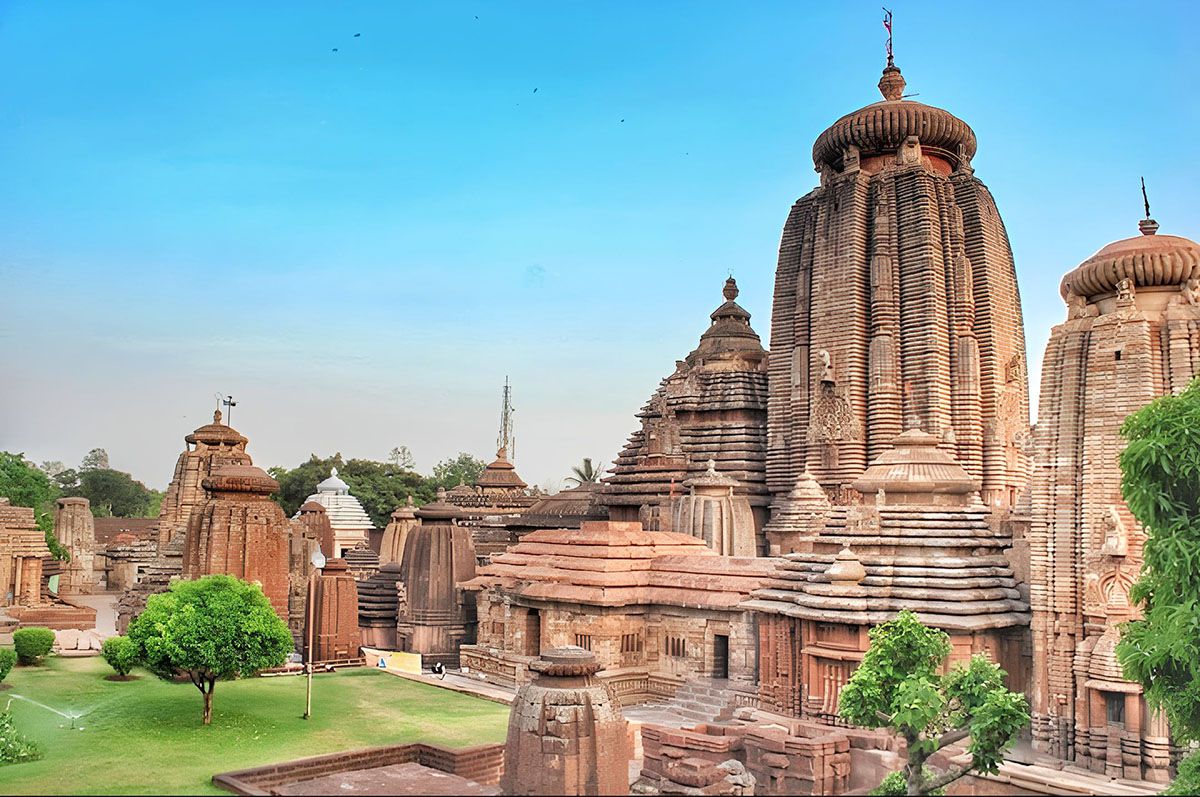The Lingaraj Temple, an architectural masterpiece and a beacon of spiritual significance, stands tall in the heart of Bhubaneswar, the capital city of Odisha, India. This ancient temple, dedicated to Lord Shiva, is not just a prominent landmark but a living testament to the rich cultural heritage and artistic brilliance of the region.
Table of Contents
A Journey Through Time: History of the Lingaraj Temple
The Lingaraj Temple boasts a history that stretches back centuries. While the exact origins remain shrouded in some mystery, it is believed that the temple’s roots can be traced to the 6th century, with significant additions and renovations taking place over the centuries. The temple’s current structure is largely attributed to the 11th century, under the reign of the Somavanshi dynasty.
Legends say that the Lingaraj Temple was built by King Jajati Keshari, who shifted his capital from Jaipur to Bhubaneswar. However, historical records suggest that the temple might have existed in a simpler form even before his reign. The Brahma Purana, an ancient Hindu text, mentions the significance of Lord Shiva in Bhubaneswar, further supporting the temple’s antiquity.
Over the years, the Lingaraj Temple has witnessed the rise and fall of empires, survived natural calamities, and withstood the test of time. It stands today as a symbol of resilience, faith, and architectural grandeur.
Architectural Splendor: A Glimpse into Kalinga Art
The Lingaraj Temple is a prime example of the Kalinga style of architecture, a distinct architectural tradition that flourished in Odisha. The temple’s towering structure, intricate carvings, and exquisite sculptures showcase the mastery of the artisans who built it.
The Lingaraj Temple complex is a sprawling expanse, enclosed within a high boundary wall. The main temple is a towering edifice, with the central spire reaching a height of approximately 180 feet. This towering structure, known as the Vimana, houses the sanctum sanctorum, where the sacred Lingam of Lord Shiva resides.
The Lingaraj Temple complex also includes several other structures, each with its own significance. The Jagamohana, or the assembly hall, is a spacious structure where devotees gather for prayers and rituals. The Nata Mandira, or the dance hall, is where traditional Odissi dance performances are held. The Bhoga Mandapa, or the hall of offerings, is where devotees offer food and other items to the deity.
The walls of the Lingaraj Temple are adorned with intricate carvings and sculptures, depicting scenes from Hindu mythology, celestial beings, and various deities. These carvings are not just decorative but also narrate stories and convey religious messages. The exquisite craftsmanship and attention to detail make the Lingaraj Temple a visual delight for visitors.
Spiritual Significance: The Abode of Harihara
The Lingaraj Temple holds immense spiritual significance for Hindus. It is dedicated to Lord Shiva, who is worshipped here in the form of a Lingam. The Lingam is considered to be a self-manifested (swayambhu) form, making it even more sacred.
The unique aspect of the Lingaraj Temple is that it is also associated with Lord Vishnu. The deity here is worshipped as Harihara, a combined form of Shiva and Vishnu. This syncretic approach reflects the harmonious blend of different Hindu traditions in Odisha.
The Lingaraj Temple is a place of pilgrimage, attracting devotees from all over the world. It is believed that a visit to the temple and offering prayers to Lord Harihara brings blessings, prosperity, and spiritual purification. The temple is particularly crowded during festivals like Shivaratri, when devotees throng the temple to seek the deity’s blessings.
Experiencing the Divine: Timings, Entry Fee, and Aarti
The Lingaraj Temple is open to visitors from early morning till late evening. The temple timings may vary slightly depending on the day and season. Generally, the temple opens around 5:00 AM and closes around 9:00 PM.
There is no entry fee to visit the Lingaraj Temple. However, devotees may choose to make offerings to the deity or donate to the temple trust.
The Lingaraj Temple is known for its elaborate rituals and ceremonies. The Aarti, a ritual of offering light to the deity, is a major attraction for visitors. The Aarti is performed several times during the day, and devotees can witness this mesmerizing ceremony.
Plan Your Visit: Location and Contact Information
The Lingaraj Temple is located in the old town area of Bhubaneswar, Odisha. It is easily accessible by road, rail, and air. The nearest airport is Biju Patnaik International Airport, Bhubaneswar, which is well-connected to major cities in India. The Bhubaneswar railway station is also a major railhead, with frequent trains from across the country.
Lingaraj Temple Old Town, Bhubaneswar, Odisha, India
Capturing the Divine: Images of Lingaraj Temple
The Lingaraj Temple is a photographer’s paradise, with its stunning architecture, intricate carvings, and vibrant atmosphere. Visitors are allowed to take photographs of the temple from the outside. However, photography is strictly prohibited inside the sanctum sanctorum and other restricted areas.
A Cultural Legacy: Lingaraj Temple’s Enduring Influence
The Lingaraj Temple is not just a place of worship but also a cultural landmark. It represents the rich heritage of Odisha, its artistic traditions, and its spiritual values. The temple continues to inspire awe and reverence, attracting visitors from all walks of life.
A visit to the Lingaraj Temple is an enriching experience, offering a glimpse into the glorious past and the vibrant present of Odisha. It is a journey that will leave you with a sense of wonder, peace, and spiritual fulfillment.
